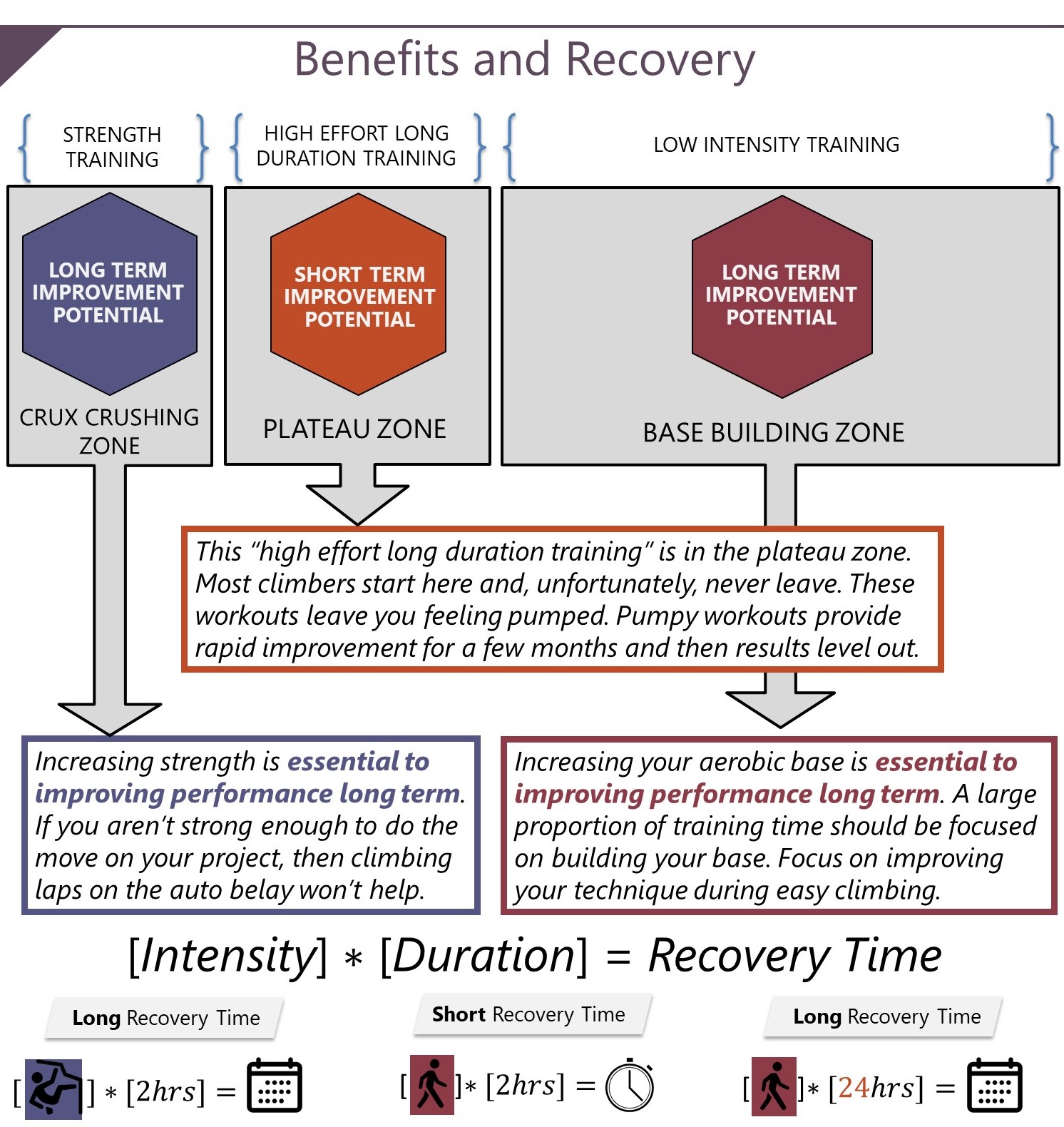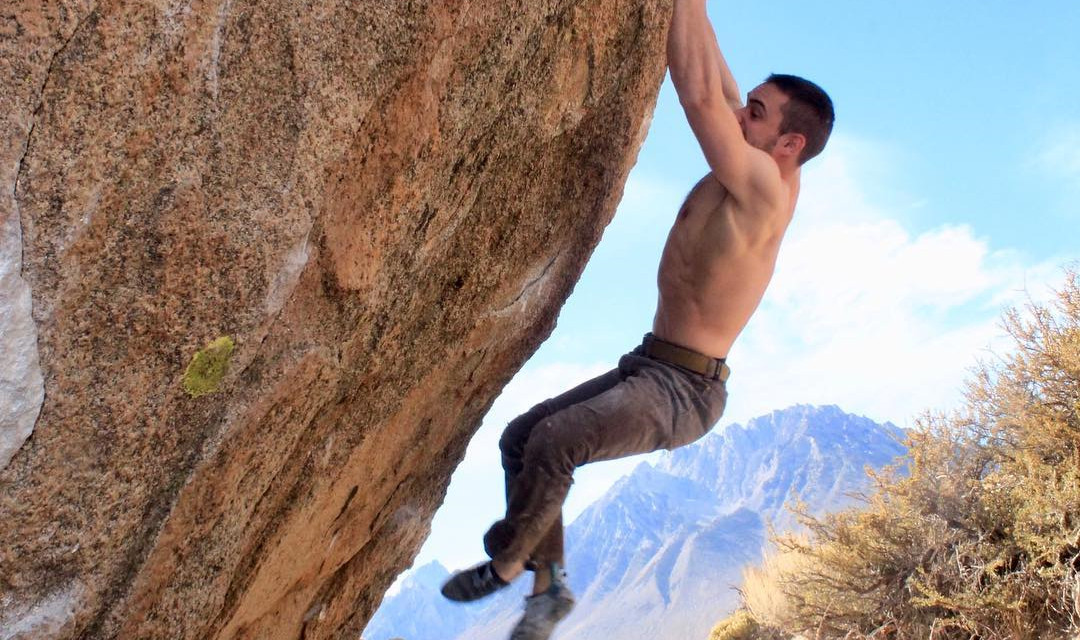Training isn’t quite as simple as picking a few exercises that target weaknesses and doing them every now and then. Knowing what exercises you need to do is only half the battle when it comes to building an effective training program, which is essential if you intend to stick with it and reap the results you’re looking for. Programming is the process of creating a training schedule that includes all relevant exercises and workouts in a cohesive manner that allows for optimal frequency and recovery. In this article, I’m going to discuss some general principles to keep in mind while building your own program. Don’t think of this as a step-by-step guide to programming as it’s more of a collection of considerations to make as you build your own plan. If you’re not necessarily looking to “build a plan,” this article should still prove valuable for gaining a better understanding of how to optimally structure your activities.
Intensity of Exercise
Stop the presses — some exercises are more intense than others. The “good coach” in me wants to say that all exercises deserve the same consideration because they all contribute to our athletic development, but the pragmatist in me has to admit that more intense exercises require more careful planning than less intense ones. Training programs aren’t executed in a vacuum, they’re built into and around everyday life.
My rule of thumb for programming exercises based on intensity is this: Figure out when your high-intensity activities occur, and work around them. Many climbing exercises, such as limit training on boulders, require you to be fully prepared and fully energized with your head in the game. Working at high intensities is what really pushes your potential forward, but it’s also where you’re most likely to get injured, if you’re not properly prepared. It’s the zone of high risk and high reward, so treat it with the attention it deserves. This means that your sixth day in a row of hard climbing is probably not the right day to try the campus board for the first time.
High volume, low intensity exercises, while clearly still important, are a bit more forgiving in terms of scheduling. While I would never force myself to do a campus session in a weak, tired, and unmotivated state, I have forced many ARC (Aerobic, Respiration, Capillarity) sessions to happen under those exact circumstances. You can still improve cardiovascular endurance and blood circulation to reduce fatigue while climbing at a low intensity.
Moderate intensity activities fall somewhere in between. I want to be as fresh as possible with high-intensity work, but I’m not quite as strict with moderate-intensity work. Sometimes I feel sluggish when I’m getting started, but I can warm up into the activity and all goes well. Other times, I call it quits after the warm-up because I know nothing positive is going to happen and I’ll be better off waiting. These types of sessions can be worth trying if you don’t feel 100% up to it, just be honest with yourself early on and don’t force it if it’s just not the right day.
More work doesn’t mean better results. Better work means better results.
If that means you need one more day of rest for a much better workout, then wait one more day.
Rest Required
This also may come as a shock, but certain exercises require more time to recover from than others. Many people don’t realize that higher intensity generally indicates longer recovery. My rule of thumb is to schedule high intensity activities at least 48 hours apart, aiming for 72 hours whenever possible.

With moderate intensity activities, I find that a day on, day off approach is simple and works well. I’ve also seen decent results doing two moderate days in a row, followed by two days of rest or one low intensity day and a rest day.
Low intensity activities tend to get crammed in wherever they can (unless I’m on a periodized program with a phase dedicated to that kind of work). Sometimes I’ll tack low intensity work onto the end of a higher intensity session while other times I’ll schedule a couple of moderate sessions followed by a light session for active recovery. It depends on my schedule as a whole, but I schedule low intensity work after the higher intensity work because it’s the easiest stuff to make fit.
It should be noted that “time between exercises of similar intensities” or “recovery period” is not the same as full rest. I’m not suggesting you do a 30-minute campus session and take 72 hours off from any kind of exercise. In fact, there are many cases where both general and sport-specific activity recovery methods should be employed to hasten recovery. The next time you go bouldering for a few hours and wake up sore as heck the next morning, see what 20 minutes of very low intensity climbing (like ARC) does for you. If you’re human, it’ll probably make you feel a heck of a lot better, faster. Use the principle of active recovery to your advantage when scheduling your workouts. You’ll get better work done more frequently and recover better in between.
Volume and Frequency of Exercise
Managing recovery periods and planning active recovery is all moot if your weekly plan looks something like this:
- 1x hard bouldering 60 mins
- 1x strength hangboard
- 1x ARC 20 mins
- 1x pumpy climbing 30 minutes

With a plan like that, you can take a full rest day in between everything! This volume and frequency may be enough to inspire gains in newer climbers, but it’s not likely to do much for someone with a higher tolerance for workload.
A nifty rule of thumb for figuring out how many times per week you should be doing an exercise is to first consider whether you want to be building fitness in that area or simply maintaining it.
If you want to build something, do it twice per week. If you want to maintain it, do it once.
Don’t get greedy though. A good way to run yourself into the ground is to try to build everything at the same time:
- 2x hard bouldering 60 mins
- 2x ARC 45 mins
- 2x strength hangboard
- 2x campus
- 2x strength resistance
- 2x pumpy climbing 30 mins

If that looks like a sane amount of work to do week after week, you’re nuts. Even if you could sustain it, you’d almost certainly be unable to recover and make meaningful gains. I should know, I’ve been there before. I was on a schedule much like the one above, but with an additional day of performance climbing, 60 minutes of running, and 30 minutes of HIIT. I was fit and it didn’t feel like too much, but it was. I was severely over-trained and not making gains like I could have, had I slowed it down. The issue wasn’t so much the training time (about 10-12 hours per week), as it was the frequency and intensity. I was doing high intensity work 5 days a week and doing multiple sessions per day. Talk about zero recovery!
Performance Climbing
The fun stuff. Performance climbing is any climbing you do for enjoyment rather than training, and it absolutely deserves a place in your training program. Having some time dedicated to simply enjoying the sport without pressure or structure can bolster or reinvigorate your motivation to train. Think of it as a “mental health” day. If you’re engaging in serious training, these performance climbing days will be invaluable for keeping you on track.
I think performance climbing deserves one full day, period. I don’t train at all on performance days. To me, that would be tantamount to choosing to work on vacation. Silliness! When I’m programming, I like to schedule my performance climbing at the start of each week. That way, I can look at what I did for my performance and see if it satisfies some of my training requirements. I happen to love hard bouldering, so I frequently end up fulfilling my need for hard/limit bouldering on my performance day. People who enjoy going out and doing a bunch of easy routes are probably getting a decent aerobic capacity workout, while people who like to redpoint are getting either an anaerobic capacity workout or a hard/limit bouldering workout, depending on the style of the route. Performance doesn’t count as training, but it can inform what you still need to do and what you’ve probably already done enough of.
Final Thoughts
I can’t stress this enough: The best training program for you is the one that you can sustain, everything else is secondary. Sticking to a mediocre plan is going to be far more effective than starting a perfect one and bailing partway through. Pretty much every piece of training literature I’ve read has a statement similar to this, and for good reason.
A rarely discussed, but important point, is the mental benefit of picking a plan and sticking to it. Cultivating an attitude of discipline, commitment, determination, and an eagerness to challenge yourself will ultimately serve you better than any training program you could possibly choose. These qualities will affect every aspect of your climbing and will constantly drive you to better yourself whether you’re actively “training” or not. So make a plan and stick to it, even if it’s just to do one little thing once a week. You’d be surprised how useful it can be on its own, let alone how it can lead into doing one more thing one more time a week, eventually blossoming into a respectable program. I grew up climbing; I competed, I climbed outdoors, I did a bit of everything. For a long time. Back then we didn’t really “train,” we just climbed and sought new ways to challenge ourselves. When I first started training for climbing, I was already scoring really well on assessments due to my background. What really helped me unlock my potential wasn’t the training itself, it was the process of training. I became more in tune with how things felt, how they should feel, how to identify weaknesses, tweak intensities, etc. I learned how to push myself in optimal ways to drive progress. That is the true power of starting a training program, not doing 3 sets of 5 or getting pumped twice a week. Those were just a means to an end.








